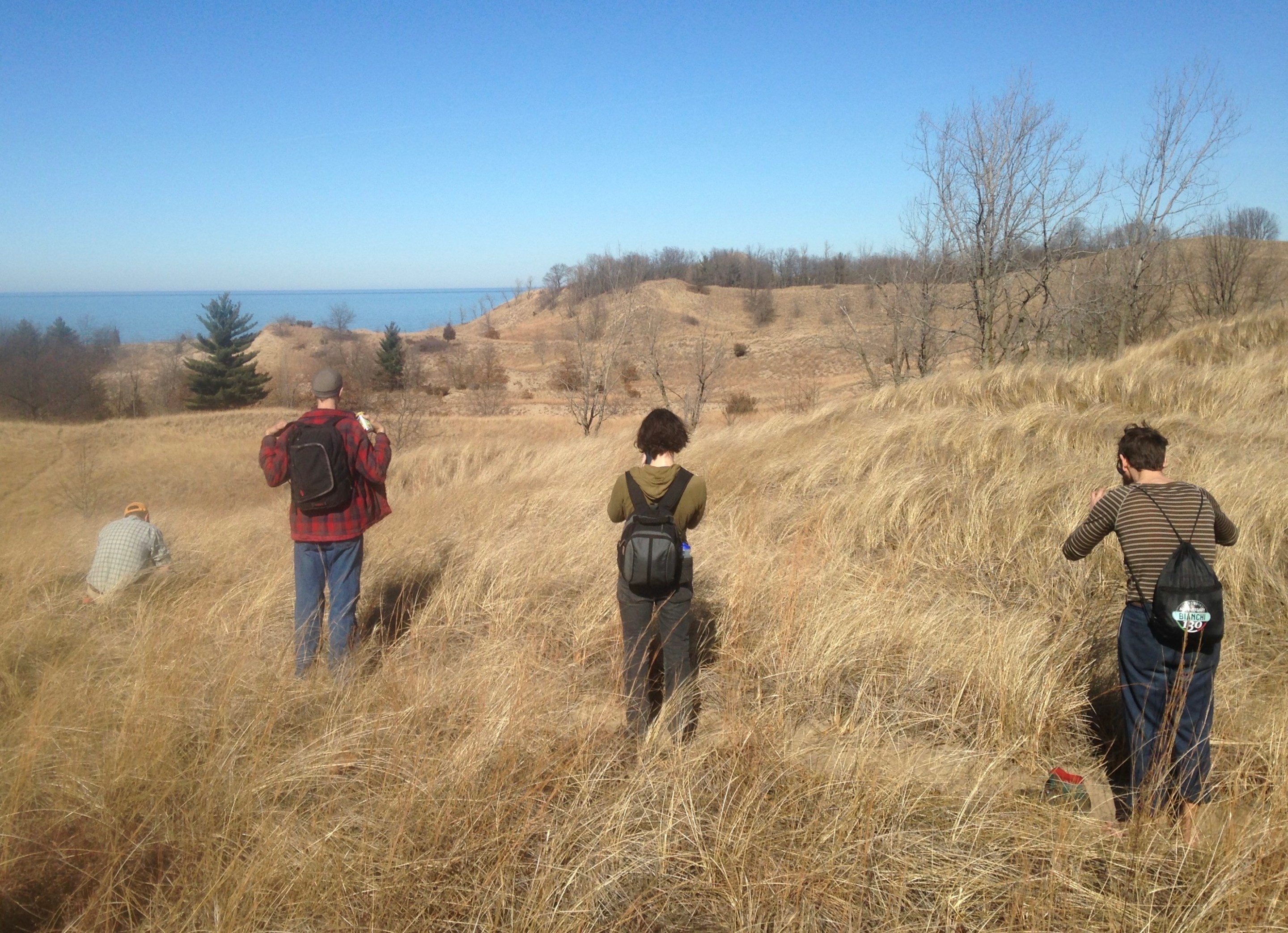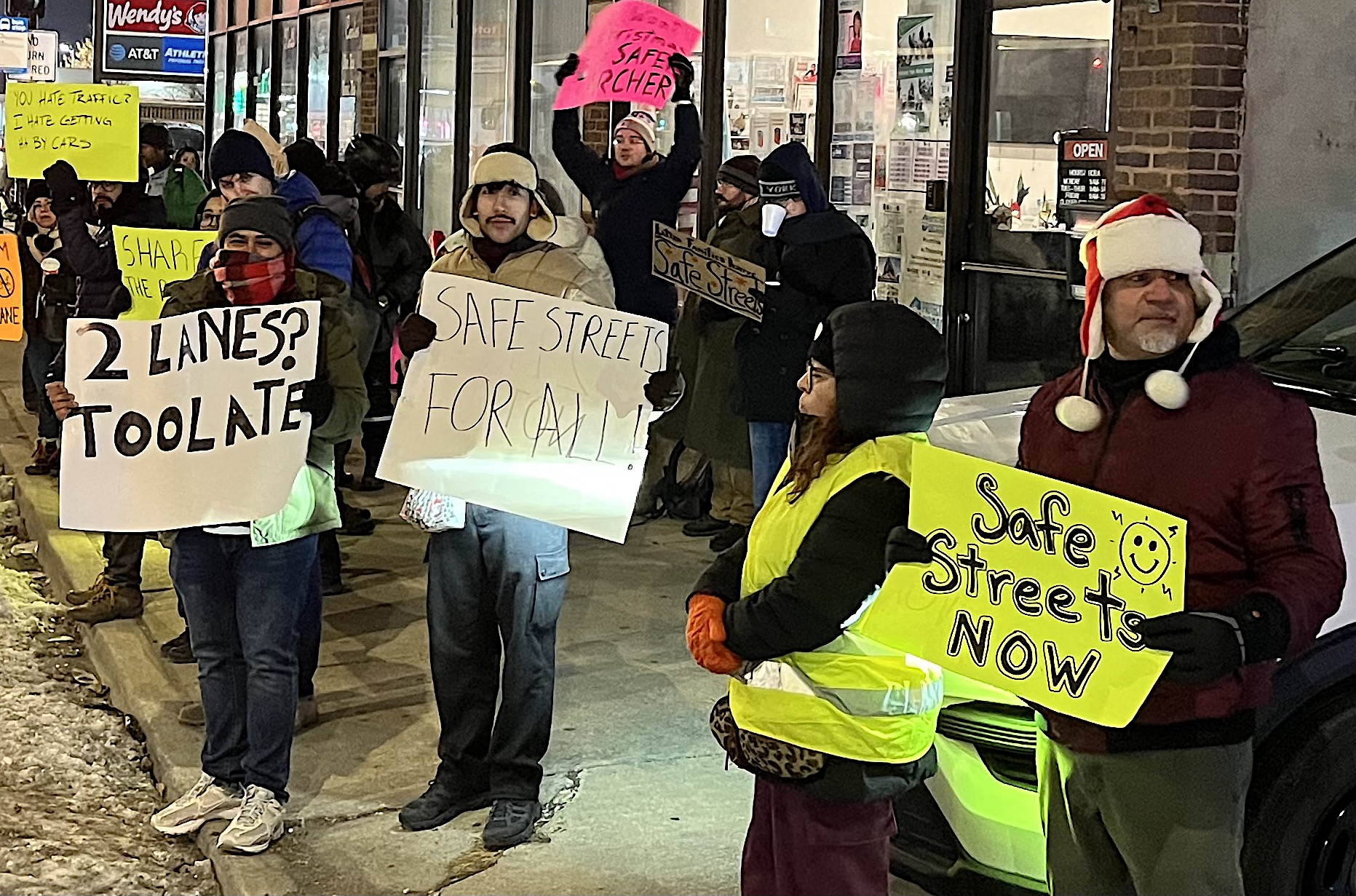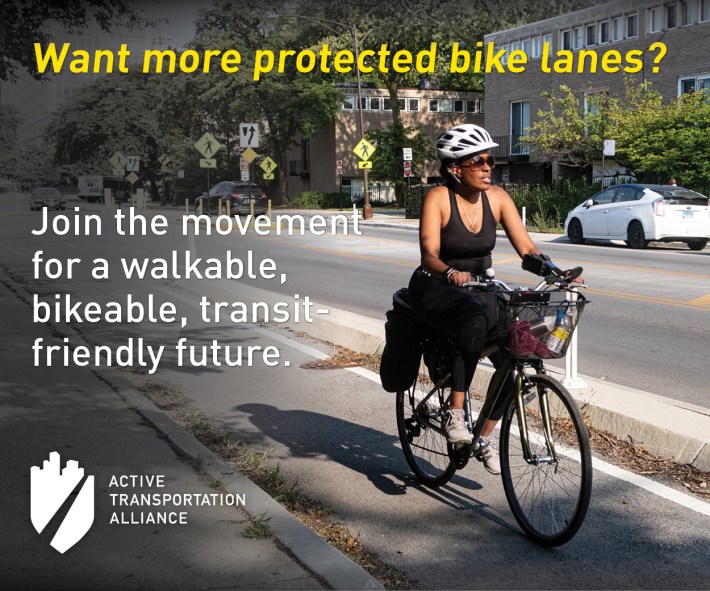
"Chicago Transit Hikes: A Guide to Getting Out in Nature without a Car" author Lindsay Welbers spent ten years living in an apartment in the Logan Square community before deciding to move. She describes Logan as a "very, very dense city-type neighborhood” that she felt was connected to nature because of all the nearby green space. For instance, she could walk to the Blue Line under tree canopy the whole way. Then she moved to Jefferson Park, which she says has more of a suburban vibe with "little postage stamp lawns."
"And honestly, it's a little bit more of a concrete jungle than it was down in Logan Square," she said. "So I said, where can I go near here to feel like I was really getting immersed in nature. And so we have the Blue Line up here, but we've also got two Metra lines within a mile of my house. So once I had figured out the process for all three of those lines near my house, I could just kind of do it for every other line. And that's when we had the book.”

Back in April 2020, early in the COVID-19 pandemic, Streetsblog contributor Abby Schultz wrote about the first edition of the book to give Chicagoans with Stay at Home-era cabin fever something to look forward to.
In the new second edition, Welbers outlines thirty different nature treks for Chicagoans and visitors to enjoy. Each of the hikes can be accessed via the CTA, Metra, and/or the South Shore Line. Each destination contains a list of different variables to consider, such as accessibility, difficulty, biking, and even family/dog friendliness.
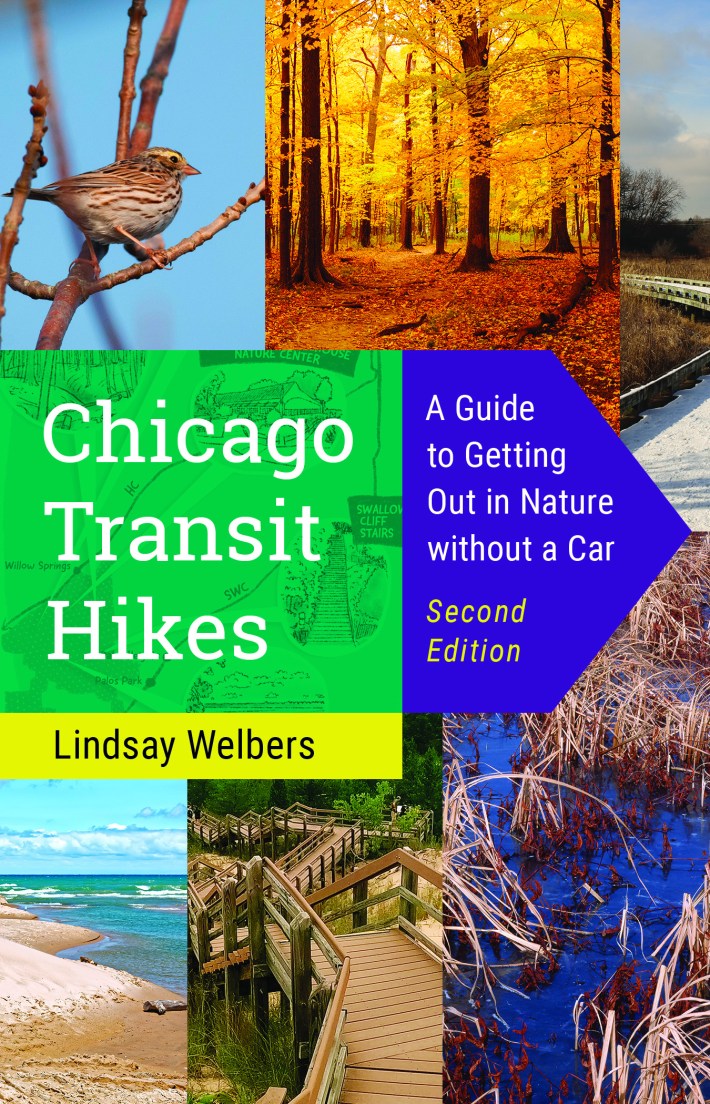
Throughout the guide book, Welbers sprinkles in several personal anecdotes that are often relatable to Chicago residents. She and her husband left Southern Illinois' Shawnee National Forest, feeling revitalized and rejuvenated after a hiking trip during a solar eclipse, only to then become stuck in eclipse viewer traffic gridlock from Carbondale to Chicago. She compares that experience to a "Mad Max" movie.
The book contains detailed descriptions of each destination. While describing the trail that the city dubbed The 606 shortly before it opened, Welbers says that she never stopped calling it by its longtime name, the Bloomingdale Trail, which nowadays is actually the official name for the elevated greenway itself. She compares that to people who still call the Willis Tower the Sears Tower (I'm one of them.) You can access that trail by train via the CTA Blue Line and Metra's Union Pacific North Line, plus various CTA bus routes.
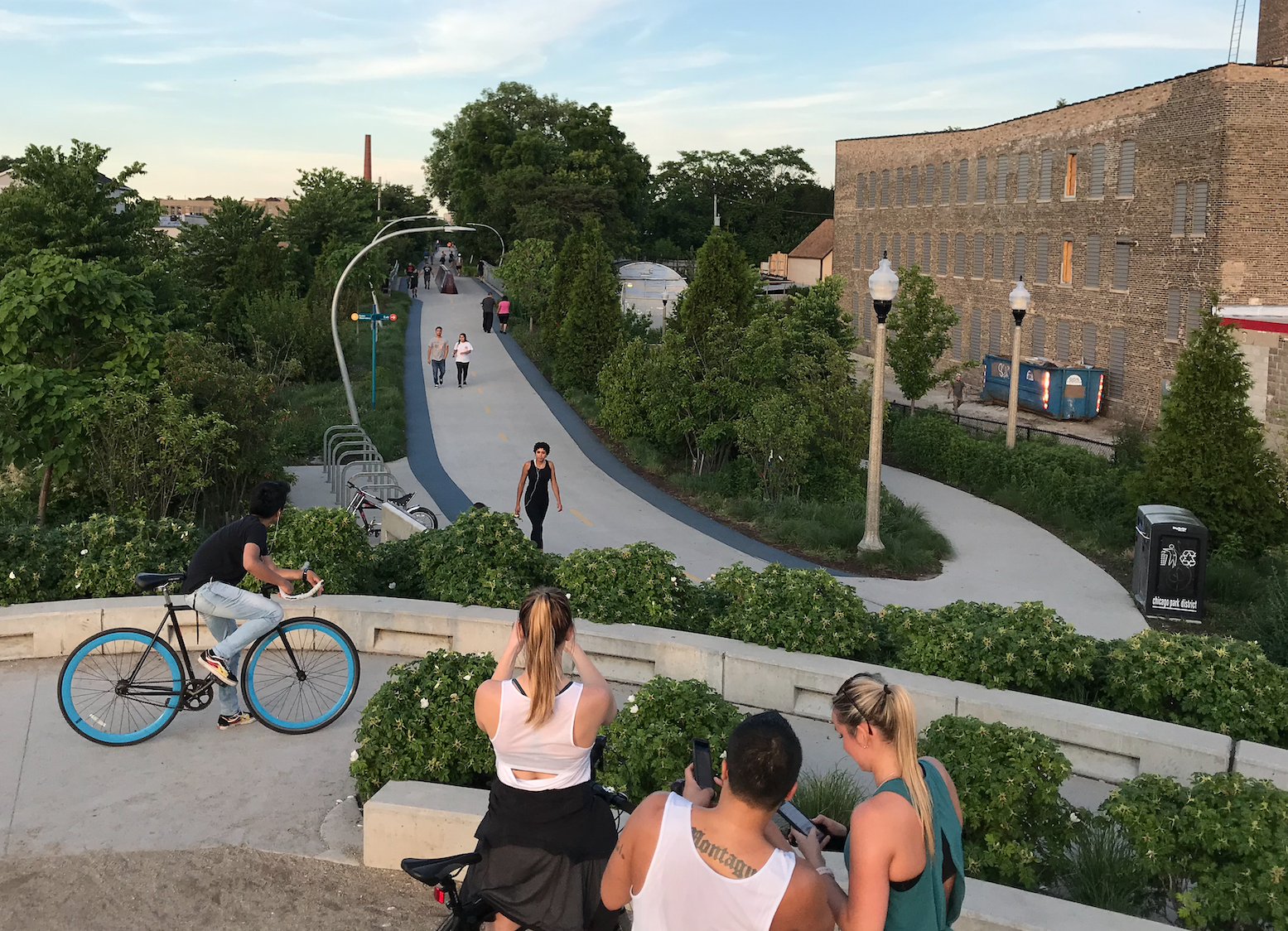
Why did she add this personal touch instead of just giving people the facts? "The facts are... definitely in there, but it's kind of a guidebook. It's a little like, if I was wandering around that neighborhood with you, if we were standing on the western end by the YMCA, that's probably just what I would ramble off the top of my head: 'Well, this used to be the Bloomingdale trail.' How did it get there?... And I just still think Bloomingdale is a better name."
Welbers says the latest version contains plenty of updated info. She said one destination that was included in the first edition, but was "kicked out" of the second, was the Chicago Botanic Gardens, accessible from the UP-N Line. That phytophile Mecca recently introduced entrance charges for people who arrive by foot, bike, or transit, in order to lower parking fees for drivers, which discourages sustainable transportation use and encourages driving. "That's not in line with the heart of the project," the author explained.
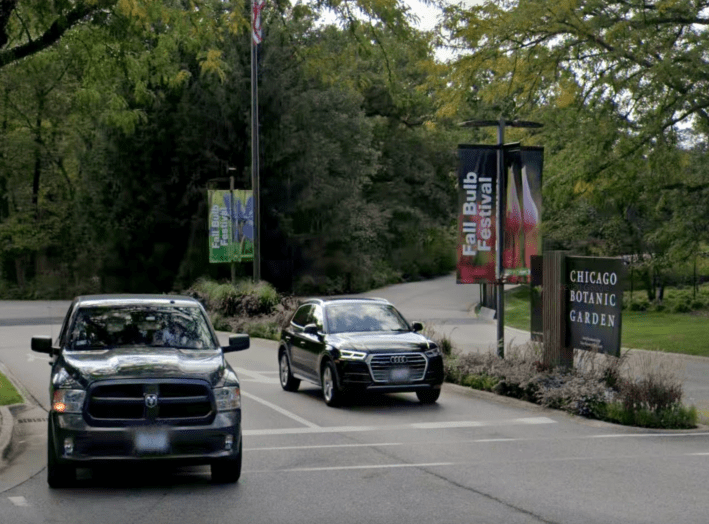
"The idea is that when you get there, you know you're spending time in nature. That's the main goal. You're not spending money," she said. "So if there's an admittance fee, we would have kicked that place out of the book entirely. And that's when we [started replacing destinations with entry fees] with different places. So that's how the Major Taylor Trail [accessible from Metra's Rock Island District Line] made its way in. And that means you get to go more on the South Side.”
The book helps debunk the notion that Chicago doesn't have access to beautiful natural spaces. "We are a city of 'big shoulders' and skyscrapers, steel and concrete and sure, all of that is true," Welbers said. But she added that there’s a surprising diversity of landscapes within range of commuter rail.
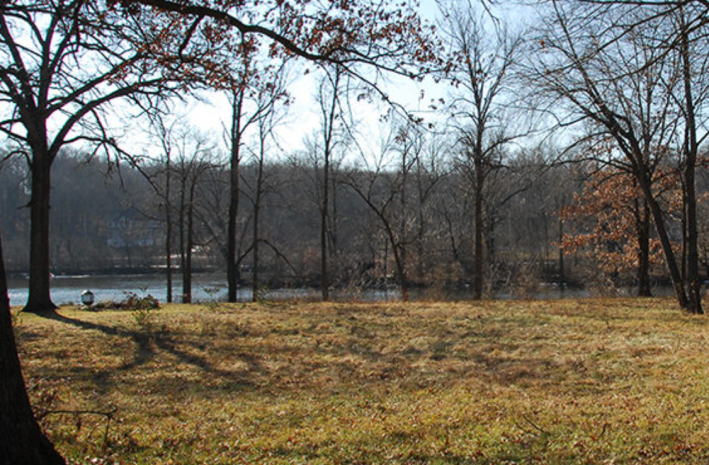
“Like the Indiana Dunes on the south shore of Lake Michigan," she said. "The sand bluffs up in [Illinois Beach State Park in] Zion [accessible from Metra's UP-N Line]. I can find you one natural waterfall to go to [Five Islands Park in St. Charles, accessible by Metra's Milwaukee District West Line], all the woodlands and fens and bogs. And if anybody has come to the conclusion that Chicagoland and Illinois are flat and boring... and there are just not enough places to get to in nature, I would encourage them, to just leave that idea. Put it down on their kitchen table... Go check it out. It's not flat, it's not boring, and it's just stunningly beautiful out there, even with all the skyscrapers right there."

Do you appreciate Streetsblog Chicago's paywall-free sustainable transportation reporting and advocacy? We officially ended our 2024-25 fund drive in July, but we still need another $43K+ to keep the (bike) lights on in 2026. We'd appreciate any leads on potential major donors or grants. And if you haven't already, please consider making a tax-deductible donation to help us continue publishing next year. Thanks!
